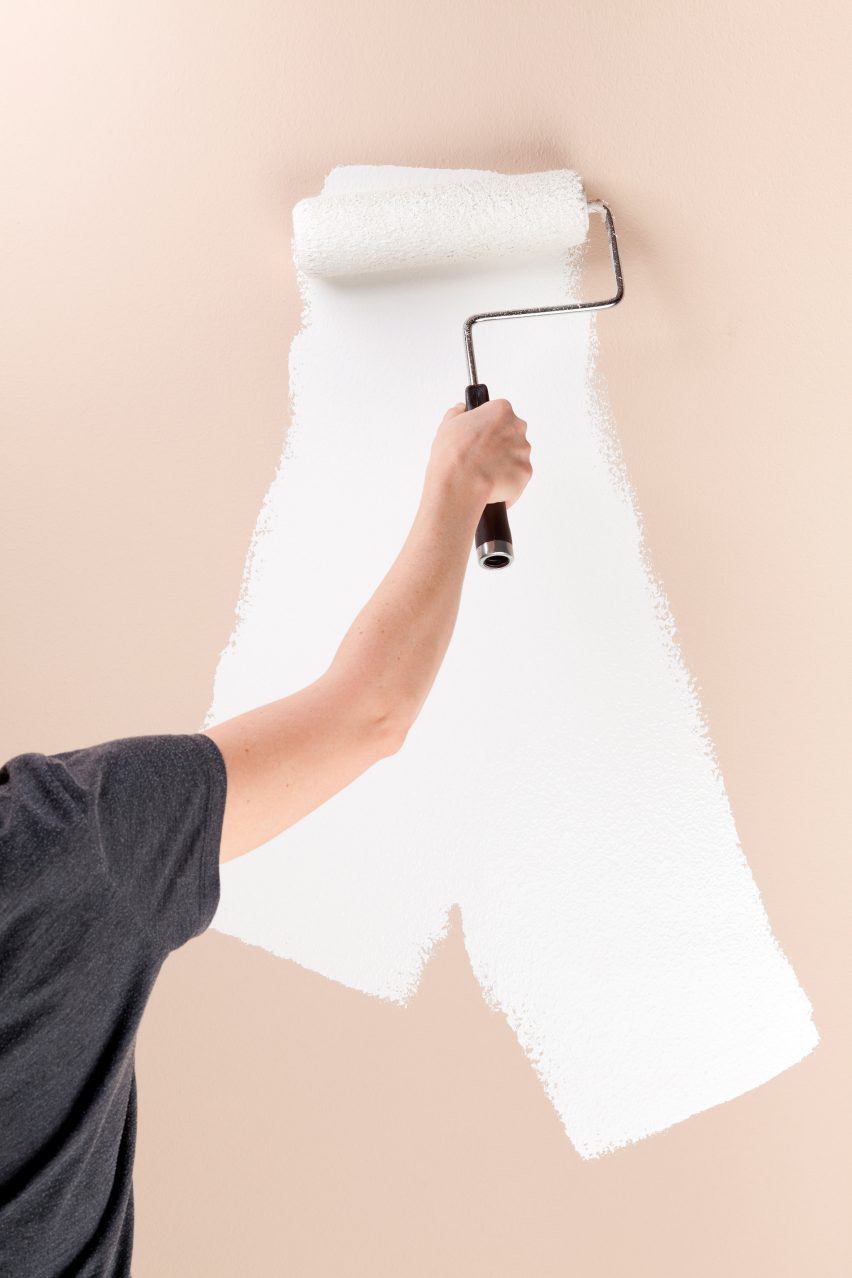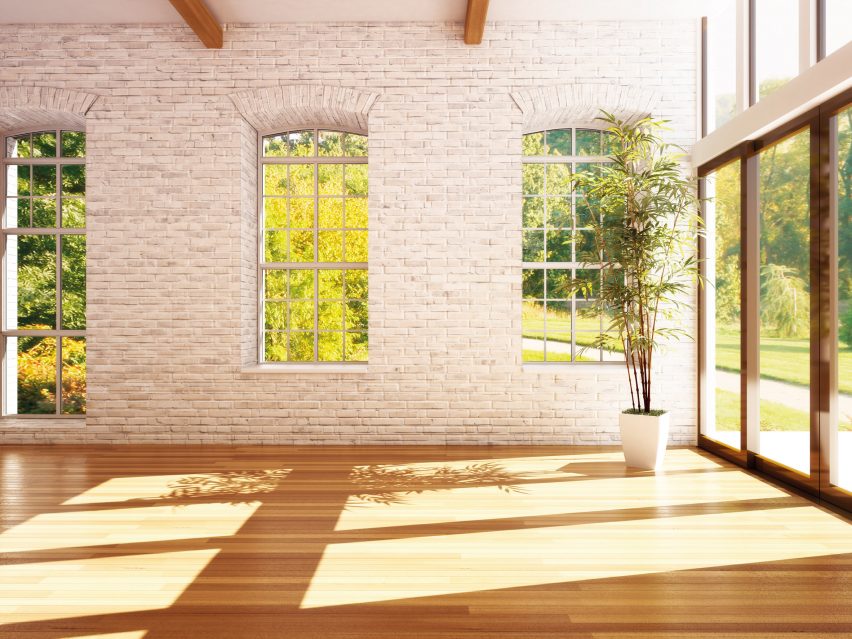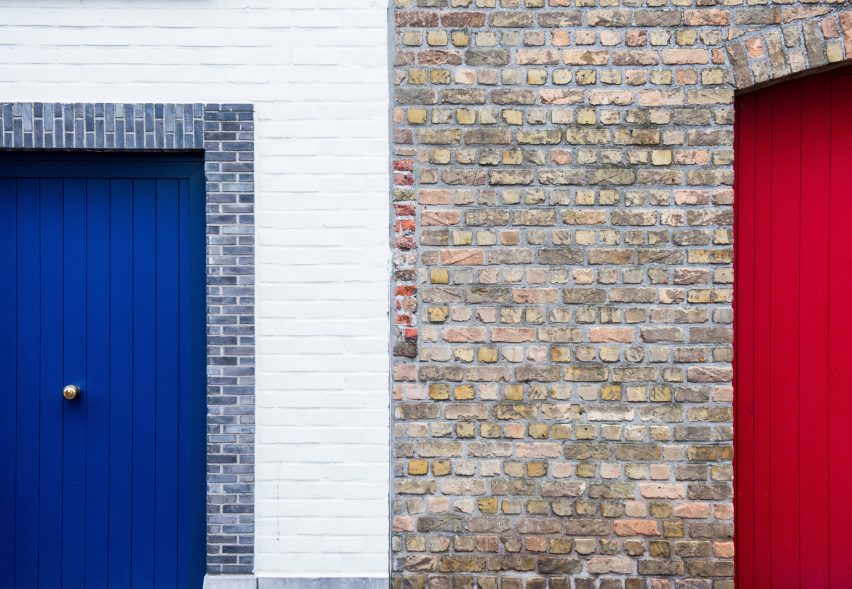
World's first graphene paint launches in the UK
Miracle material graphene – considered the strongest substance known to science – has been used to make eco-friendly paint by manufacturer Graphenstone.
The paint is made from a pure lime base that has been combined with graphene – a recently engineered material hailed as the thinnest, strongest and most conductive ever developed.
It will be distributed in the UK through The Graphene Company, which claims Graphenstone is the most environmentally friendly paint in the world.

While lime-based paints have been on the market for years, the addition of graphene, with its superconductivity, means that the paint can improve the thermal regulation of buildings. They would therefore require less heating and air conditioning.
"When used on interior wall surfaces, rather than heat being radiated through the walls, the graphene within the paint captures the heat," The Graphene Company director Patrick Folkes told Dezeen.
"It then conducts the heat through the paint, and across the whole Graphenstone-painted surface of interior walls. This enhances the insulation measures used in buildings by slowing heat conduction through walls and out of buildings. "

Another environmental benefit comes from graphene's thinness and strength, which means less paint is required to achieve a durable finish that is resistant to corrosion. The Graphene Company says a litre of paint would cover two eight-metre-square coats.
The paint's base is made from 98 per cent pure lime, which is known for its absorbency of carbon dioxide, meaning that the paint purifies the surrounding air.
The Graphene Company claims it is the combination of these materials that produce "the most sustainable and eco-friendly paint in the world".
"Sustainability is becoming more and more important as people realise the damage that acrylics do to the environment throughout the manufacturing process and its use on walls," said Folkes.
"Graphene's inclusion in paints, coatings and other building materials exponentially enhances hardness, durability, compression, tensile strength, elasticity and coverage."

Manufacturer Graphenstone originates from Seville, Spain, where the purest qualities of lime in the world can be found.
But while this super-pure lime makes for highly absorbent and breathable paint, it lacks in strength. This is where graphene comes in.
A hot material right now, graphene has been proposed for everything from ultra-thin "more pleasurable" condoms to night-vision contact lenses.
It is made up of a hexagonal lattice of carbon atoms that is just one atom thick.
"For the first time in history you've got this fusion of one of the oldest and most trusted building materials, lime, with the very latest nanotechnology," said Folkes.
"What that has ended up producing is a product that has all the benefits of lime, which as you know is very breathable, antibacterial and absorbs smells and carbon dioxide, and class-one strength, like an acrylic product."
When the paint is applied, it creates a hard shell as the lime hardens up in the carbonisation process. Folkes describes the initial consistency as a "little bit watery", but over a period of 10 days, it creates a hard, even coverage.
What's more, no fumes are given off in the process.
"It might smell a bit like wet masonry but you could put a baby to bed in the room and no harm would be done whatsoever."
The product is available in exterior and interior versions, and has already been used to coat the walls of hospitals, hotels and schools. Folkes says it is also gaining a growing interest from the restoration industries.